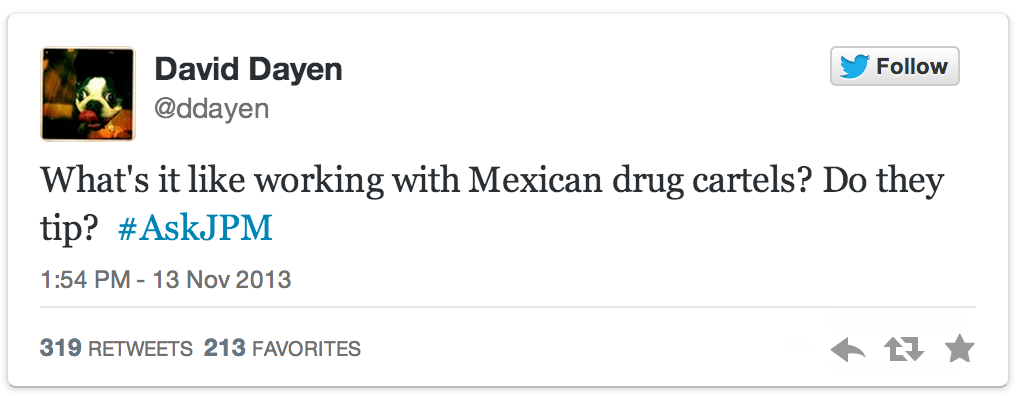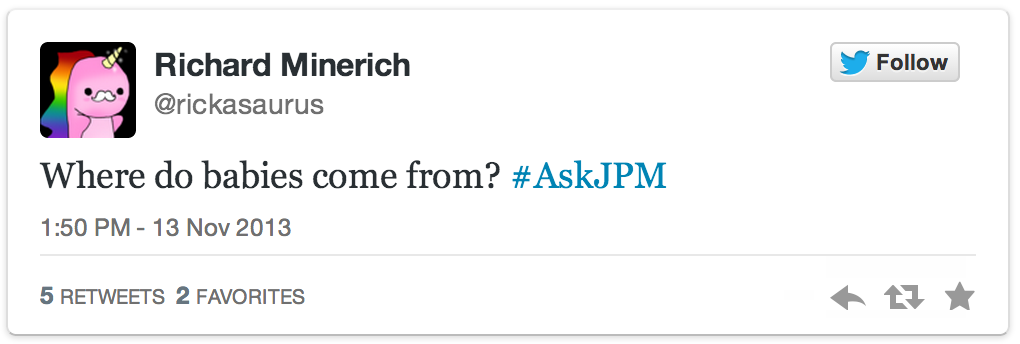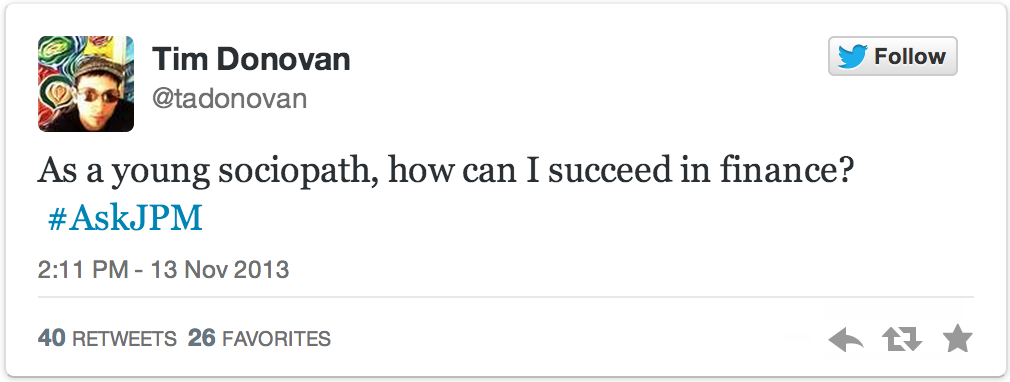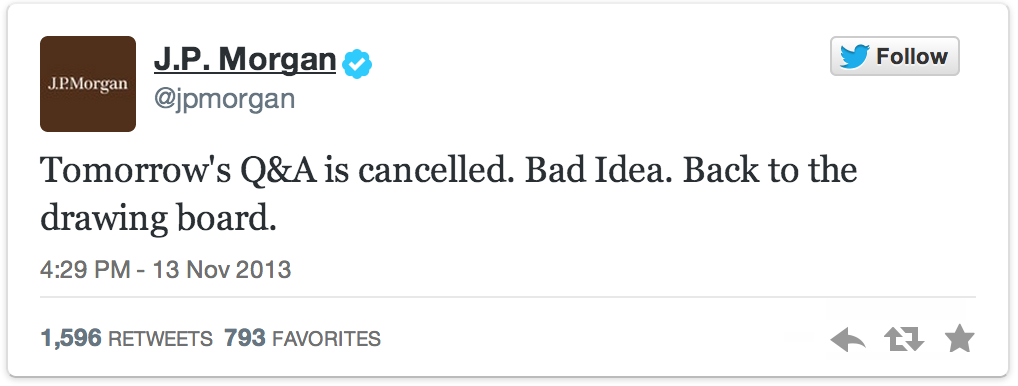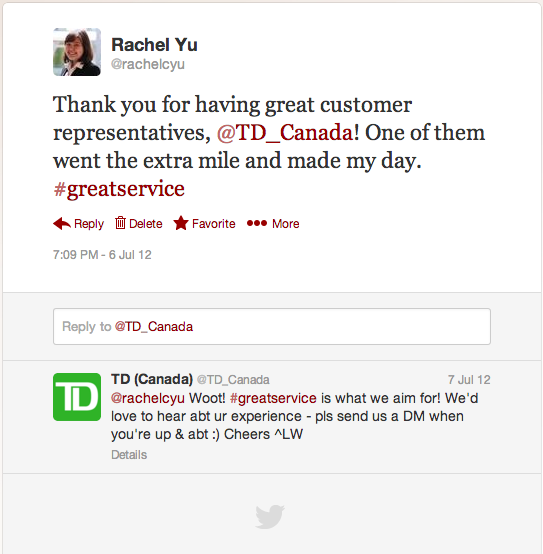Even if social media is something companies should tap on for the growth of their business, companies should still research and assess whether their type of business really suits social media. Social media is great but it’s not for everyone. Just early last week, JP Morgan‘s Twitter #AskJPM campaign turned into a fiasco. Considering the bad presses they have been getting for the past year, this move probably wasn’t the smartest thing for the company to do.
Below are some of the tweets that proved the campaign was a disaster:
It took six hours before the people behind JP Morgan’s Twitter account decided to call it a day for their campaign.
While six hours can be a long time to realize that the campaign wasn’t doing any good for the company, I think it was still relatively good for the people behind their social media team to be able to react to it within 12 hours. While this campaign is certainly a disaster, I think it would be quick to say that JP Morgan is that type of business that can’t benefit from social media. A Q&A campaign might not exactly be a bad idea for JP Morgan, but the way it was executed was definitely done poorly. If only JP Morgan had made a more thorough assessment of the Q&A campaign and recognized any potential backfire situations that may occur, then maybe, this campaign might have been not as bad as it ended it to be.
I think one of the things JP Morgan could have done to at least have made the result more favourable is changing the way they marketed the #AskJPM.
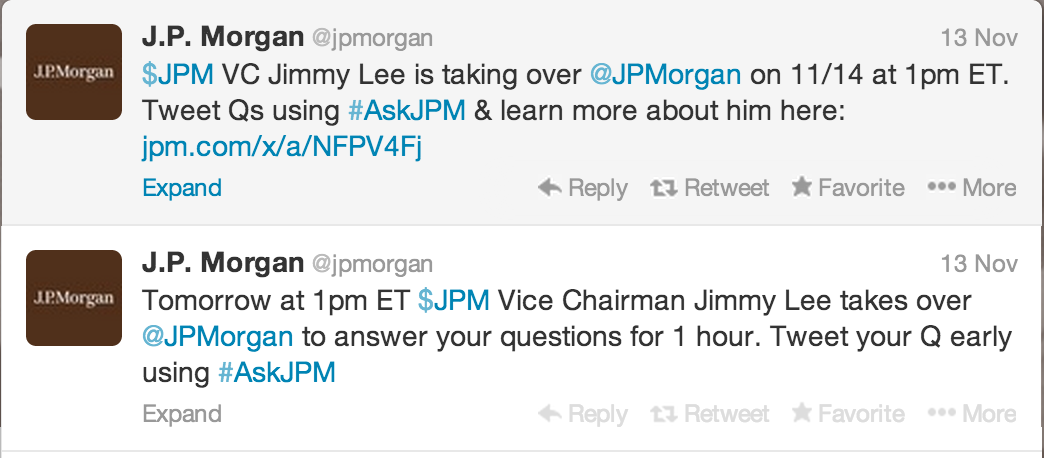 Based from the tweets above, it seems like JP Morgan just marketed the campaign as a Q&A. The scope and what this campaign can do for its followers (ie. Q&A for graduating students who want to work for JP Morgan) were not mentioned. It practically seemed that it was Q&A for all and that anything goes. And I guess JP Morgan can’t really blame Twitter users to be asking out-of-this-world questions. By marketing the Q&A campaign as an opportunity for interested graduating students to learn more opportunities in the company might have yielded better results.
Based from the tweets above, it seems like JP Morgan just marketed the campaign as a Q&A. The scope and what this campaign can do for its followers (ie. Q&A for graduating students who want to work for JP Morgan) were not mentioned. It practically seemed that it was Q&A for all and that anything goes. And I guess JP Morgan can’t really blame Twitter users to be asking out-of-this-world questions. By marketing the Q&A campaign as an opportunity for interested graduating students to learn more opportunities in the company might have yielded better results.
Q&A campaigns can really yield good results even if the company doing the campaign has been having bad press or is known for some few bad things. A good example of this would be McDonalds. Their yourquestions campaign proved to be successful even though a lot of people have negative views on their food. This shows JP Morgan could have actually benefited from their #AskJPM campaign if they have only stated what the Q&A was for, just like how McDonalds clearly stated that the yoursquestions campaign was for consumers to ask any questions they have about their food.

